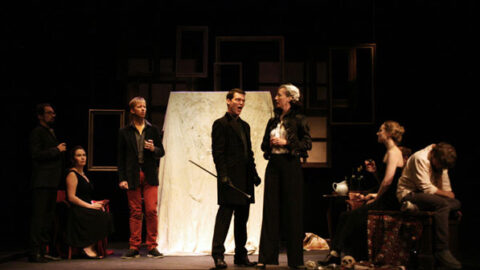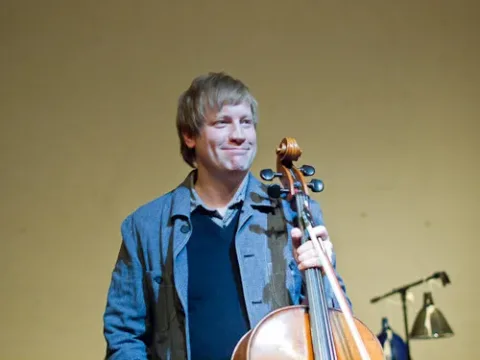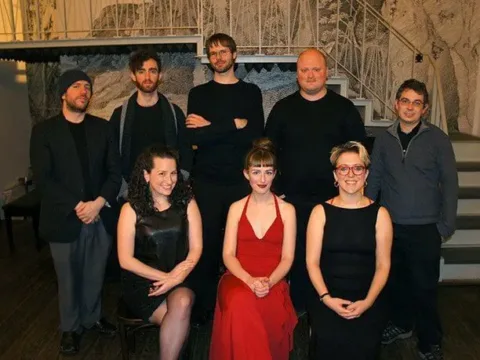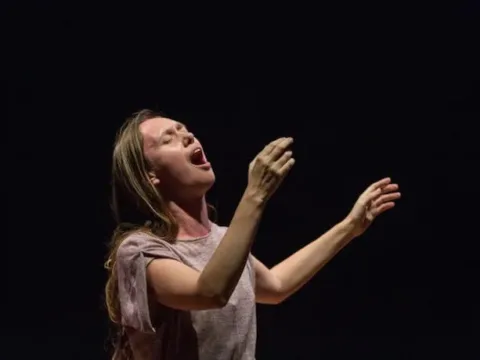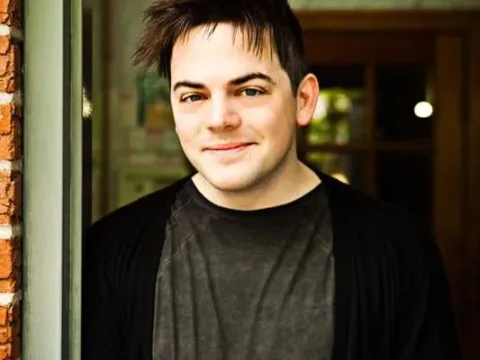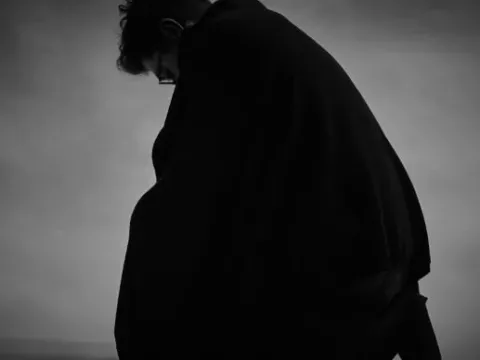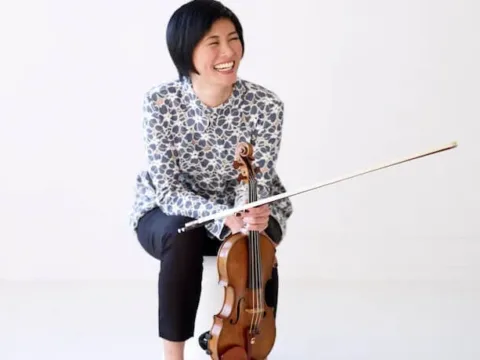 A new production with libretto and music by Tim Benjamin, Madame X premiered in London on Tuesday, August 25 at the Arcola Theatre, an intimate industrial space that almost lent itself to this small chamber opera.
A new production with libretto and music by Tim Benjamin, Madame X premiered in London on Tuesday, August 25 at the Arcola Theatre, an intimate industrial space that almost lent itself to this small chamber opera.
The premiere was well-attended, with a sizable audience packed into a house where the front row is about 11 inches from the cramped stage – though you won’t notice the tight space when you see the brilliant set design by Lara Booth. With empty frames hung above the stage, blank canvases, sparse furniture, and a frame on the grounding marking the set dimensions, the design is clean, modern, and relevant to the opera: a take on Don Giovanni, featuring a poor painter and his fiancée, the greedy art dealer, a wealthy patron, a slimy art collector, and a party of drunken revelers.
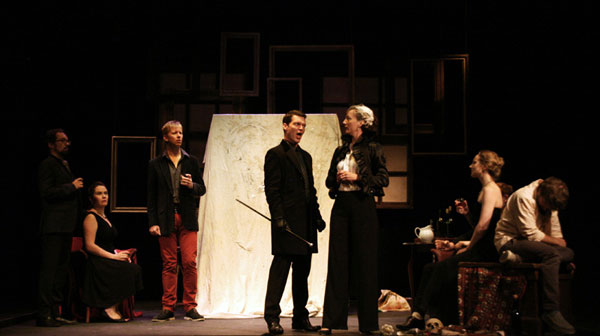
When the art dealer, Botney, sung by Jon Stainsby, first entered the stage, I thought it was an audience member trying to find their seat on the opposite side of the house. The setup of the house was nearly impossibly small, and it felt like it would be much better suited to a one-man show, not a chamber opera.
Zerlina, brilliantly played by Laura Sheerin, didn’t come alive as a character until she argued with Botney about the money he deducted for his fee, leaving the young couple with nothing. Botney spoke only in platitudes, deftly woven into his lines; “The best things in life are free, Zerlina! Money doesn’t grow on trees, Zerlina!” During this scene, Zerlina was fiery, demanding, and strong – though she was mousy and indecisive amongst other characters. When she and Masetto argued after Botney departed, she told him “No, Masetto, do not touch me,” three times, and every time he pulled her close again. I don’t know what’s more criminal, the complete and total lack of chemistry and passion between the two young lovers, or the fact that he ignores her “no” three times, illustrating the problems our society still has with understanding consent and boundaries.
Taylor Wilson left me wishing we had an entire opera about Lady Brannoch, instead of the plot forcing her an offensive caricature of an older woman, obsessed with youth and beauty. My kingdom for a sexy, older woman character who isn’t reviled for her sexuality – hasn’t this trope been done already, particularly with Marcellina in The Marriage of Figaro? As Masetto tugged Lady Brannoch’s dress back down, it felt like cheap laughs at the expense of women over the age of 40 who refuse to become sexless and resign themselves to become dusty knick knacks while their men chase after young women. I loved Lady Brannoch (her poise, her confidence, and her sultry poses, expertly played by Ms. Wilson and sung in excellent voice) and when Masetto described her as a “nightmare vision” to Zerlina, I felt nothing but animosity towards our master painter.
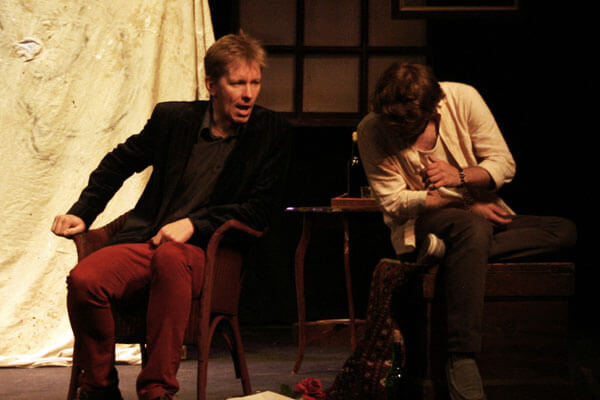
The offstage drunken reveling was absolutely spot on: I could barely tell the difference between the production and what I generally hear on a Saturday night on the street outside my apartment. The revelers brought Mr. Wilmore, the slimy and predatory art collector, to the young couple’s door. Zerlina was confident and exciting in the argument with Botney, which is why I was bitterly disappointed when the opera devolved into Indecent Proposal: Mr. Wilmore offered the couple money for one night with Zerlina. Maybe Masetto realizes what the audience did – Zerlina and Mr. Wilmore, convincingly played by Marc Callahan, who immersed the audience in this deliciously skeezy, predatory, slimeball character, have more chemistry together than they ever did.
Act 2 opened with a bizarre yet effective juxtaposition: church bells, preaching, and passers-by commenting on the recently murdered Zerlina, rotting in the canal: “She was much prettier when she was alive…and had both her eyes.” Our beautiful, smart heroine, was fridged. A hymn, sung by the chorus offstage, was rife with sighing, Brahmsian harmonies which were a welcome palate cleanser to prepare the audience for the short second act.
We endured a very arduous scene of Masetto pining over his lost love, in which he downed some absinthe, accompanied by delectably creepy harpsichord as he slowly lost his marbles to the Green Fairy. He sung of flaming eyes, and I for one was disappointed when the final portrait contained Laura Sheerin as Zerlina, instead of some demented nightmare fodder. As Zerlina stepped through the frame to serve the party guests wine, I wondered if everyone had partaken of the absinthe: Was it some sort of guilty hallucination? As everyone but Masetto dropped dead, I was disappointed in the lack of resolution in the finale; did the demanding party guests and Lady Brannoch deserve to die?
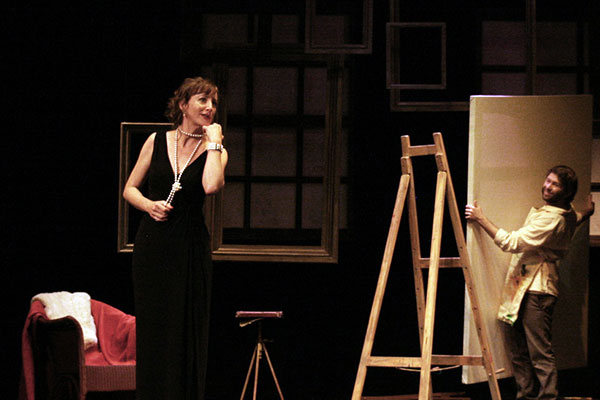
The cast of Madame X were impressive and in excellent voice; I look forward to seeing each of them in future productions. The orchestra, under the direction of Antony Brannick, were beautifully controlled in their dynamics—a difficult feat in such a claustrophobic space, though it still wasn’t enough to overcome the acoustic problems presented by the architecture. Building on Don Giovanni was unnecessary and felt clumsy and forced. Tim Benjamin tried to cram too much meaning and allegory into the opera, which created a cluttered and distracting production. Still, the cast and crew performed admirably, and Madame X is enjoyable enough—especially if you enjoy new opera.
